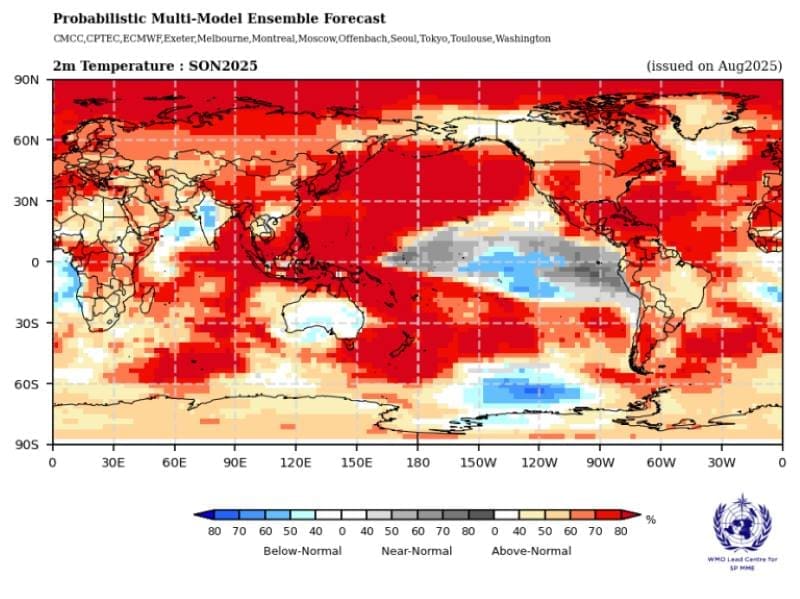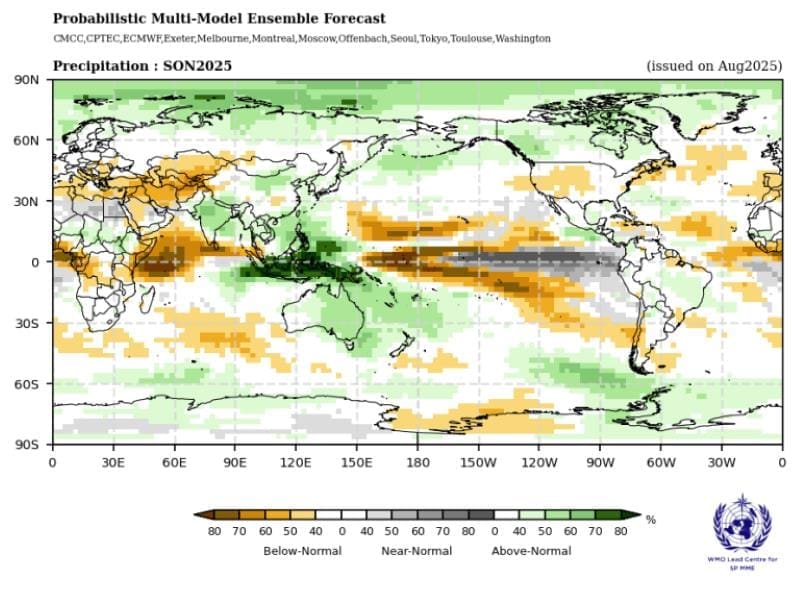Geneva, Switzerland | AFP | Muser NewsDesk
The cooling La Niña weather phenomenon may return between September and November, but even if it does, temperatures are nonetheless expected to be above average, the United Nations said Tuesday.
La Niña is a naturally occurring climate phenomenon that cools surface temperatures in the central and eastern equatorial Pacific Ocean. It brings changes in winds, pressure and rainfall patterns.
Conditions oscillate between La Niña and its opposite El Niño, with neutral conditions in between.
Following a brief spell of weak La Niña conditions, neutral conditions have persisted since March, the UN’s World Meteorological Organization said.
“There is a 55 percent chance for sea surface temperatures in the equatorial Pacific to cool to La Niña levels,” in the September to November period, it said.

“For October-December 2025, the probability of La Niña conditions slightly increases to about 60 percent,” the UN weather and climate agency added in a quarterly update.
There is little chance of El Niño developing during September-December.
In many locations, especially in the tropics, La Niña produces the opposite climate impacts to El Niño, which heats up the surface of the oceans, leading to drought in some parts of the world and triggering heavy downpours elsewhere.

Climate change backdrop
The unusually protracted 2020-2023 La Niña was the first so-called triple-dip La Niña of the 21st century — and only the third since 1950. It intensified drought and flooding.
However, despite La Niña’s cooling effect, it did nothing to break the run of exceptionally hot years.
The last 10 years make up the hottest 10 individual years ever recorded.
Temperatures have remained at record or near-record levels even after El Niño conditions faded last year — with 2024 the hottest year on record.
The WMO underlined that naturally-occurring climate events such as La Niña and El Niño take place against the backdrop of human-induced climate change, “which is increasing global temperatures, exacerbating extreme weather, and impacting seasonal rainfall and temperature patterns.”
The WMO’s latest update said temperatures for the September-November period were expected to be above normal in much of the northern hemisphere and large parts of the southern hemisphere.
“Seasonal forecasts for El Niño and La Niña and their associated impacts on our weather are an important climate intelligence tool,” said WMO chief Celeste Saulo.
“They translate into millions of dollars of economic savings for key sectors like agriculture, energy, health and transport and have saved thousands of lives when used to guide preparedness and response actions.”
rjm/nl/cw
© Agence France-Presse
Article Source:
Press Release/Material by AFP
Featured image credit: Romello Williams | Unsplash



